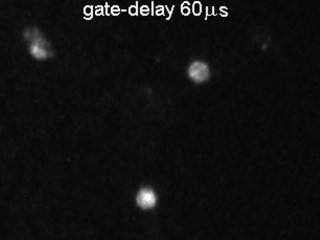Time-Resolved Fluorescence Microscopy Using an Improved Europium Chelate BHHST for the In Situ Detection of Cryptosporidium and Giardia
RUSSELL CONNALLY,1* DUNCAN VEAL,1 AND JAMES PIPER2Abstract
Fluorescent immunoconjugates prepared with the europium chelate BHHCT (4,4bis(1,1,1,2,2,3,3-heptafluoro-4,6-hexanedion-6-yl)-chlorosulfo-o-terphenyl) have previously been reported as suitable labels for time-resolved fluorescence applications. BHHCT is limited by a tendency to destabilize immunoglobulins when covalently bound to the protein at moderate to high fluorophore to protein ratios (F/P). We report a new derivative of BHHCT prepared by appending a short hydrophylic tether to the chlorosulfonate activating group on BHHCT. The new derivative, BHHST (4,4-bis-(1,1,1,2,2,3,3-heptafluoro-4,6-hexanedion-6-yl)sulfonylaminopropyl-ester-N-succinimide-ester-o-terphenyl), was activated to bind at the tether terminus with a succinimide leaving group that displayed less aggressive coupling activity and improved storage stability. BHHST has been used to prepare a stable and useful immunoconjugate with the antiCryptosporidiummonoclonalantibodyCRY104.TheBHHSTimmunoconjugateprovidesmorethan a 10-fold enhancement in the signal to noise ratio (SNR) of labeled oocyst fluorescence over background when observed using TRFM techniques. An immunoconjugate was also prepared with BHHST and (goat) anti-mouse that effectively labeled Giardia cysts in situ. Detection of cysts with the TRFM was achieved with an 11-fold increase in SNR when a gate-delay of 60 s was employed. The storage half-life of both immunoconjugates is extended more than 20-fold when compared to immunoconjugates prepared with BHHCT. Microsc. Res. Tech. 64:312–322, 2004. © 2004 Wiley-Liss, Inc.




